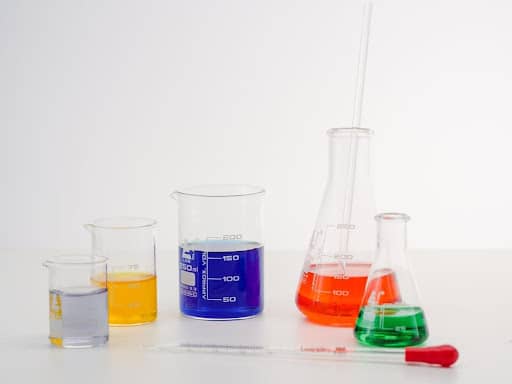Chemistry and Chemicals for Pool Science

Swimming pools offers fun, but keeping chlorine levels balanced & bacteria at bay can be tricky. So important to know there variables. Check scientific rundown of each.
Do you have a swimming pool? Do you like chemistry? If you answered yes to either of those questions, you’re in the right place. If you answered yes to both, you’re really in the right place.
There’s a lot people need to know about pool chemicals and chemistry. Three of the most important variables to learn about are PH, chlorine, and water hardness. I’ll give a quick, scientific rundown of each.
Important Variables for Swimming Pool
PH Balance
PH, sometimes capitalized more like pH, stands for Potential of Hydrogen. The number reflects the number of hydrogen ions that can dissociate from their current molecules.
High numbers of hydrogen atoms makes a compound acidic; low numbers make it basic. Basic, or alkaline, substances are also known for having free hydroxide ions.
This is also why acids and bases neutralize each other. The hydrogen ion, H+, is positive. The hydroxide ion, HO-, is negative. The two charges cancel each other out.
The scale used to measure pH confuses a lot of people. In fact, according to this article, the letter p is actually shorthand for a mathematical operation, a negative logarithm. “Oh, crud,” you say. “I didn’t know there would be math!” But don’t worry! I’ll explain it all in layman’s terms.
(Side note: any mathematicians and/or chemists are cringing at my descriptions. It’s okay. I’m not writing for you. I’m writing for people who don’t know much about this stuff.)
A logarithm is easier to explain by examples than by definition, so here goes. The logarithm of 10 is 1. The logarithm of 100 is 2. The logarithm of 1,000,000 is 6. And no, it isn’t just “the number of zeroes;” the logarithm of 1,111,111 is only slightly over 6. (6.04576, if you want greater precision.)
The definition of a logarithm is roughly this: the power to which you would have to raise ten in order to reach the number you have. Like how a hundred is ten squared, and a million is ten to the sixth power.
So a negative logarithm is one in which the answer decreases by one every time the input number drops by a factor of ten. That means that an acid with a pH of 2 is ten times more concentrated than an acid with a pH of 3, and it’s also why alkaline compounds like lye have a higher pH when they have fewer hydrogen atoms.
How does this relate to pools? Well, the pH of pool water needs to be balanced carefully. Pure water is a neutral 7 pH (lower than 7 is an acid, going down to 1, and higher is a base, which can reach the number 14). Pools should be between 7 and 7.6.
Standard chemical pH test strips don’t usually have the resolution to precisely cover that range; there are special pool test strips with a finer resolution from around 6 to 8, instead of the full scale.
Comments
Post a Comment